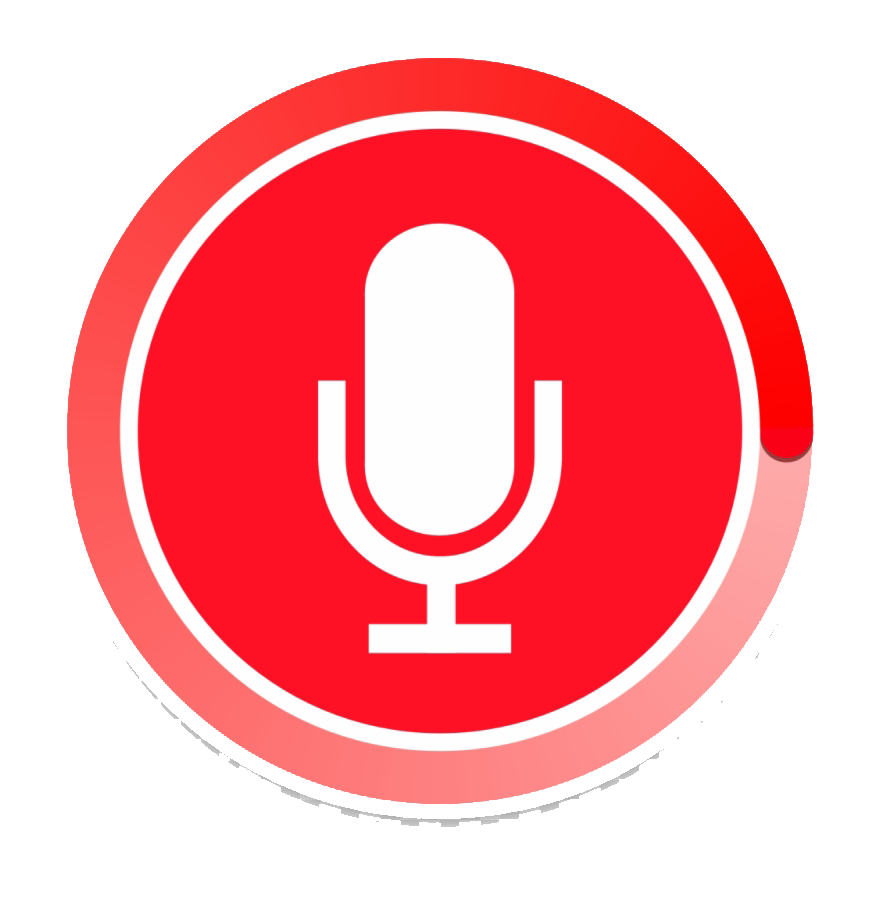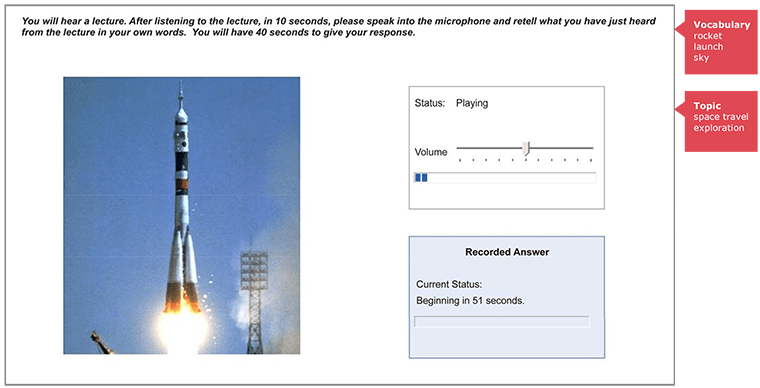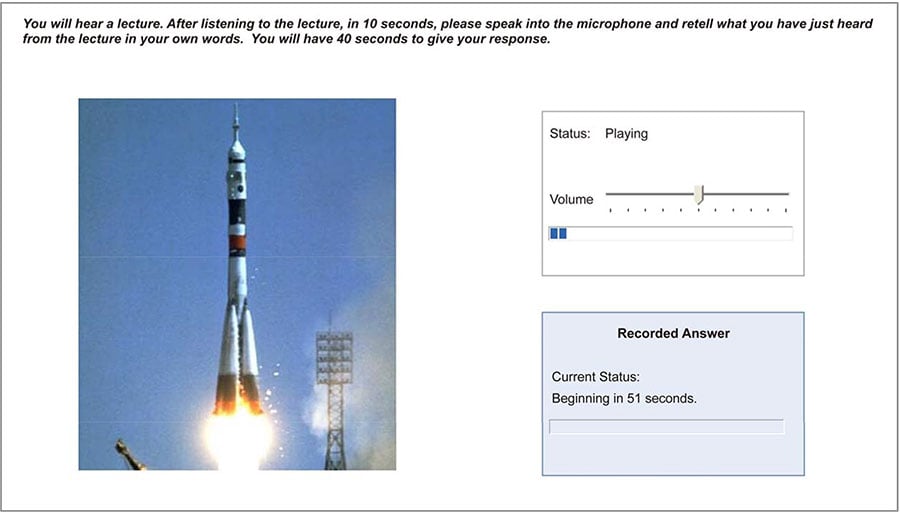
 About Re-tell Lecture
About Re-tell Lecture- Task - After listening to or watching a lecture, re-tell the lecture in your own words.
- Skills assessed - Listening and Speaking
- Prompt length - Up to 90 seconds
- Time to answer - 40 seconds
The audio begins to play automatically. You may also see an image related to the audio. After the audio finishes, you have 10 seconds to prepare. The recording status box displays a countdown until the microphone opens. You hear a short tone. After the tone, start speaking immediately. Do not start speaking before the microphone opens because your voice will not be recorded.
You should speak clearly. There is no need to rush. Finish speaking before the progress bar reaches the end. The word “Recording” changes to “Completed’’. You are only able to record your response once.
Note: While the audio is playing, you can take notes on the erasable noteboard provided.
 Test Tips:
Test Tips:You have 3 seconds before you listen to the recording to quickly look at the image on the screen. Use this time to think about the vocabulary you might hear. This will give you an idea of the topic of the lecture and help you predict what you will hear when the recording begins:

Make good use of the 40 seconds speaking time:
You only have 40 seconds to speak and make sure that you include all the main points of the lecture. If you repeat ideas, correct yourself or hesitate, you will use up valuable time and lose score points. So keep talking and ignore any mistakes that you make.
 Read Also: Listening: Multiple Choice, Single Answer
Read Also: Listening: Multiple Choice, Single Answer
 How this question is scored:
How this question is scored:Content: Does your response accurately and thoroughly retell the information in the lecture? Content is scored by determining how accurately and thoroughly you convey the situation, characters, aspects, actions, and developments presented in the lecture. Your description of relationships, possible developments and conclusions or implications is also scored. The best responses retell all the main points of the lecture and include possible developments, conclusions, or implications. Mentioning a few disjointed ideas will negatively affect your score.
Oral fluency: Does your response demonstrate a smooth, effortless, and natural rate of speech? Oral fluency is scored by determining if your rhythm, phrasing, and stress are smooth. The best responses are spoken at a constant and natural rate of speech with appropriate phrasing. Hesitations, repetitions, and false starts will negatively affect your score.
Pronunciation: Does your response demonstrate your ability to produce speech sounds in a similar way to most regular speakers of the language? Pronunciation is scored by determining if your speech is easily understandable to most regular speakers of the language. The best responses contain vowels and consonants pronounced in a native-like way and stress words and phrases correctly. Responses should also be immediately understandable to a regular speaker of the language.
PTE Academic recognizes regional and national varieties of English pronunciation to the degree that they are understandable to most regular speakers of the language.
- Partial credit scoring applies to Re-tell Lecture. No credit is given for no response or an irrelevant response.
- This question type affects the scoring of the following: listening, speaking, oral fluency and pronunciation.
- Your writing skills are not tested by this question type, and your reading skills are only used to read the instructions.
Source: https://pearsonpte.com
 Tips By ALFA:
Tips By ALFA:
If your notes are hard to read, try using a cursive reader to quickly convert handwriting to text for better clarity.
Along these lines, take clear notes in understanding what you have written. To improve note-taking rate, you may utilize flowcharts, shortened forms, or alternate route strategies. Or practice until you get accustomed to your note taking.
Note down basic keywords from the talk. They can be Adjectives, Adverbs, Verbs, Proper Nouns, and other logical words.
You may take single word notes. But, it is better to note down pieces of words, which you can use to build a total sentence.
On the off chance that you pause for over 3 seconds, the mic will stop naturally. Anything you state after that won't be recorded.
Avoid using fillers like 'uhm' and 'aah'.
Use connectors like 'besides', 'also', 'moreover', 'furthermore', and so on can be used. Use what is easy and what comes naturally.
While you are composing, monitor the clock, so you know that you're on target.



